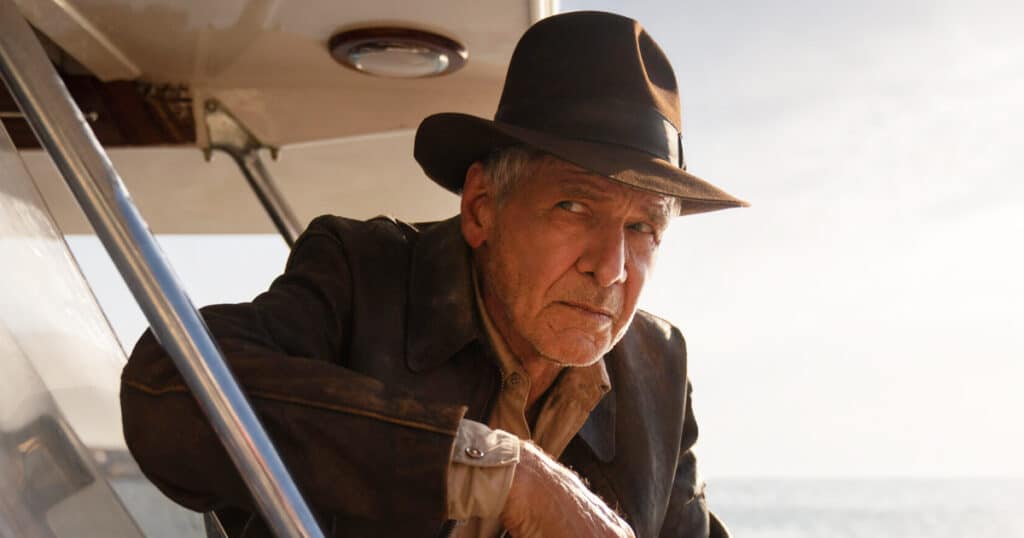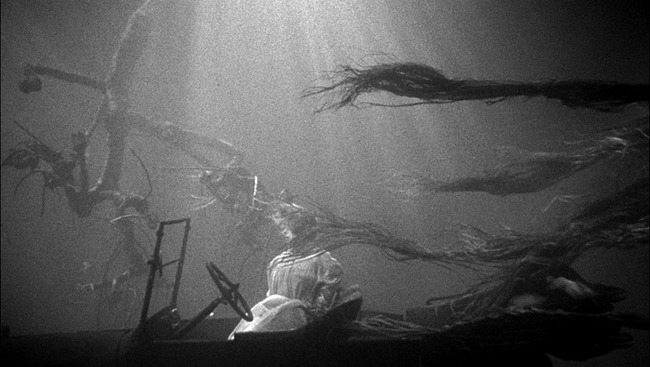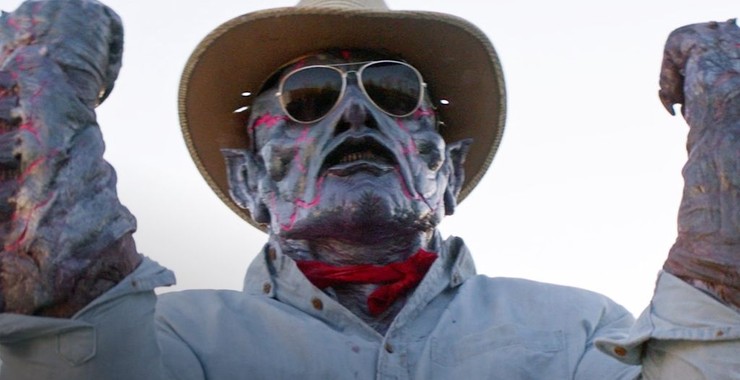
For over four decades, the character of Indiana Jones has been one of cinema’s leading heroic adventurers. The archaeologist/professor portrayed by screen giant Harrison Ford has been through countless ordeals and quests that put him in a variety of perils that he always manages to survive at the very last moment after some highly suspenseful moments of doubt. The now-five Indiana Jones films (all of which but the most recent one were masterfully directed by Steven Spielberg) have, in wildly varying degrees, stretched believability to the point of occasionally breaking it while also rarely ceasing to entertain along the way.
1981’s Raiders of the Lost Ark remains the true masterpiece of the series. It is one of the most refined, gleefully tantalizing, and endlessly mesmerizing escapist films of all time. It set the standard and tone for the series and defined its adventurous spirit and classily executed style. 1984’s Temple of Doom is a dark and wild ride that features still-beating hearts being ripped out of chests, child slavery, voodoo dolls, soul possession, and some rather impossible (though highly amusing) stunts. 1989’s Last Crusade is a more grounded, though still outlandish, adventure that features the stroke-of-genius character addition of Jones’ father portrayed by Sean Connery.
2008’s Kingdom of the Crystal Skull was unjustly panned by both audiences and critics for being too far-fetched and silly. While the film is certainly the most implausible of the series, its critics seem to have forgotten all the death-defying stunts and extraordinary moments of fantasy that were prominently featured in the previous films. Few have bothered to take note of the fact that the film is aware of itself and having fun with its absurd and playful unbelievability.
Now, in 2023, there is a new Indiana Jones adventure titled Dial of Destiny. As previously stated, it’s the first film in the franchise that is not directed by the legendary Spielberg. It is, instead, helmed by the very talented (though not quite as singularly and groundbreakingly spectacular) James Mangold. The film features an elderly Indiana Jones seeking out the missing piece of the Dial of Destiny, an artifact from Ancient Greece that turns back time, before it falls into the hands of Nazis that are led by the evil Dr. Voller, who is portrayed by the exceptionally gifted Mads Mikkelsen. The tired Jones is dragged into the story by and subsequently teams up with his goddaughter (Phoebe Waller-Bridge), a wily, greedy, and spunky woman with a hidden heart of gold who is seeking out the dial piece for her own personal gain.
The film opens with an extended flashback in which Jones first gets his hands on and then loses the dial piece. In this sequence, we see Jones, through the aid of deepfake digital technology, as a much younger man. Though the technology has greatly improved since its use in recent films such as The Irishman, it still has a way to go before it’s fully undetectable. Free software found online has proven to produce more believable results than the methods on which Hollywood is still spending hundreds of thousands of dollars. The effect overall works for Dial of Destiny, however, and it’s near magical to see Ford as a young man again in one of his most iconic roles.
The finer details to the story of Dial of Destiny are a bit uninteresting and resultingly hard to follow. Though the overall narrative is rather simple, the specifics are never properly explained or enticing enough to demand full attention. The lack of clarity and interest sometimes leads to brief moments of distraction and confusion, but never so much to the point that they completely ruin the film’s entertainment value.
The film’s biggest fault is its haphazard and sporadically sluggish pacing. With a runtime of over two-and-a-half hours, Dial of Destiny is the unnecessarily longest entry to the series. Countless moments could have easily been tightened or simply excised to remove at least twenty minutes from the total duration. My mind tended to wander quite heavily during some of the duller and overly long moments that come between moments of spectacle.
The action sequences also have a tendency to go on too long, sometimes producing more numbness than they do thrills and suspense. They simply aren’t as impressive as they are in the previous films. The action scenes are mostly enjoyable and functionally well done, but director Mangold just doesn’t carry Spielberg’s magical, intangible touch that made the other films so exceptionally grand and unique.
It has plenty of otherworldly moments (especially towards the end), but Dial of Destiny seems to have taken criticisms against Kingdom of the Crystal Skull to heart and tried a little too hard to make up for them. The action, set pieces, and fantasy elements seem to be playing it a little too safe in trying to appear grounded and realistic. Though the film may be a bit more believable than the rest of the series, it comes at the price of not providing its audience with enough moments of breathtaking astonishment that are so prominently featured in the other films.
The remarkable talent of and chemistry between certain cast members are among the film’s primary highlights. Ford plays the elderly Jones with curmudgeonly humor, impressively strong physicality, and typically grounded naturalism. His age undeniably shows, but what he is still able to accomplish is amazing nonetheless. Waller-Bridge is feisty, vivacious, and devilishly charming as Jones’ goddaughter. She and Ford’s playful banter and eventual bond produce some of the film’s most satisfying and moving moments.
Mikkelsen, as the primary villain, carries off the role with his typical smoothness and icy emotional control. It is a calculated portrayal of a character with little personality and even less humanity. Mikkelsen provides the character with the sociopathology and heartless ambition that he needs to be a viable and tension-inducing threat. The fantastic Antonia Banderas portrays a Jones ally and is, unfortunately, wasted in a brief role that carries little importance and has a wholly disappointing and anti-climactic exit.
Another major strength of the Dial of Destiny is the nostalgia it creates by consistently tipping its hat to characters, storylines, and incidents found in other parts of the series. The film’s callbacks to previous films are never cheap or forced, and they enrich and fill in some emotional gaps in the current film so that it eventually feels like an important and developed piece of a much grander whole. By reminding the audience of what came before, the film manages to end with a satisfying and surprisingly touching conclusion to not only this story, but also to the entire series.
For all its faults, of which there are quite a few, the film miraculously comes together in the end. There are many moments that produce excitement, drama, and humor, but there are also some moments that produce boredom, confusion, and disinterest. However, traveling Indiana Jones and the Dial of Destiny’s rough road is still recommended (with some mild hesitation) because the eventual destination quietly and gracefully makes it all worthwhile.
GRADE: B-



